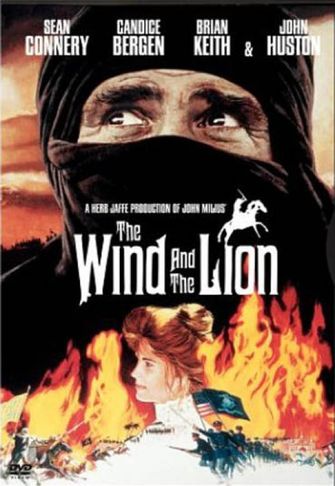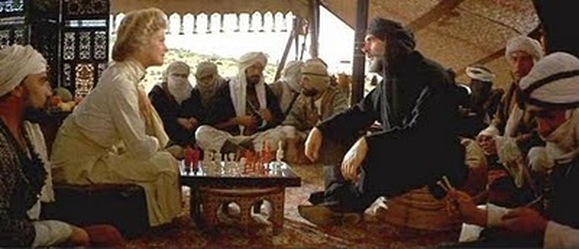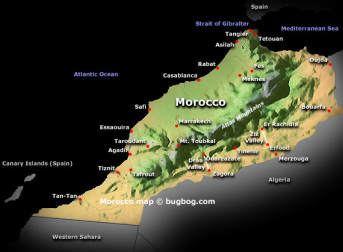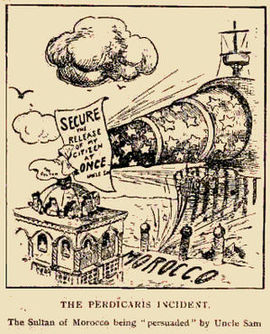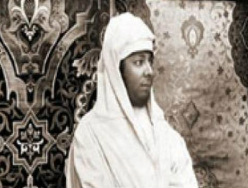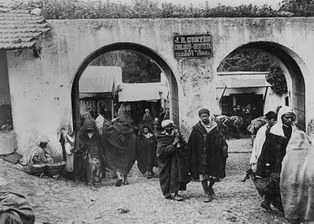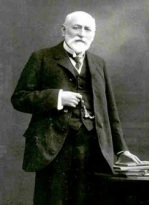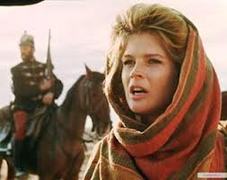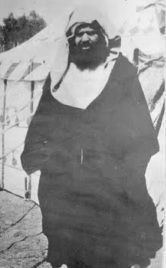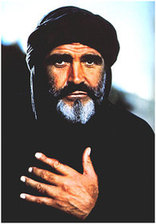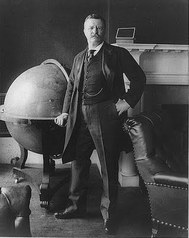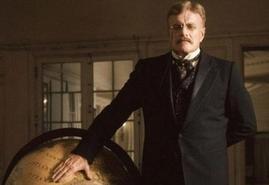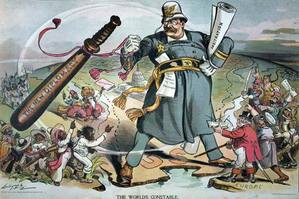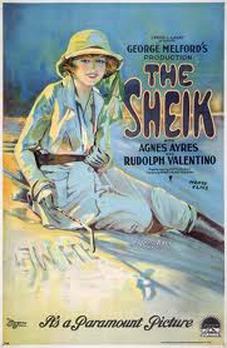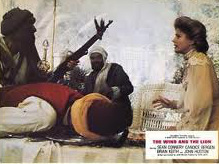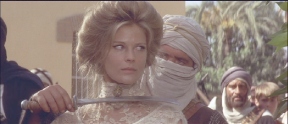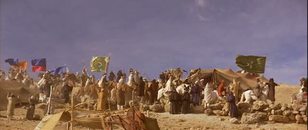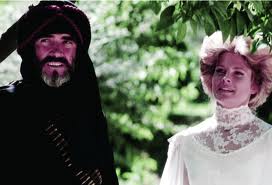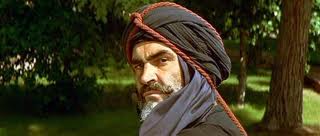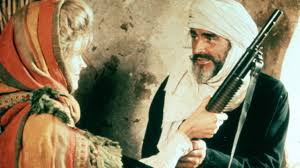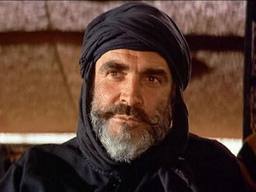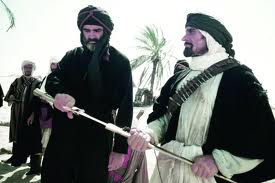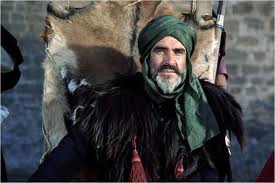The Wind and the Lion (1975 - Dir: John Milius)
Almost four decades on, John Milius' movie, set in Morocco in the early 1900s, remains a remarkably assured, intelligent and spectacular epic.
Not only does it have one of Sean Connery's best performances. It combines great action scenes with an unsentimental but affecting hint of romance , exotic vistas and fascinating characters.
The Wind and the Lion is certainly not historically accurate. But it was remarakbly precient for its time in its depiction on the implications of hostage-taking of Americans in Arab countries and the expansion of American influence into the Arab world.
Not only does it have one of Sean Connery's best performances. It combines great action scenes with an unsentimental but affecting hint of romance , exotic vistas and fascinating characters.
The Wind and the Lion is certainly not historically accurate. But it was remarakbly precient for its time in its depiction on the implications of hostage-taking of Americans in Arab countries and the expansion of American influence into the Arab world.
|
|
What's it all about?The Wind and the Lion is loosely but cleverly based on a hostage-taking event in Morocco in 1904. (At the time Morocco, along with Abyssinia, were the only two independent states in Africa.) An amiable, chubby and wealthy elderly American named Ion Perdicaris, and his English stepson, Cromwell Varley, were kidnapped in Tangiers by Mulai Hamid El Raisuli, who combined banditry with spiritual leadership. As his armed followers subdued the two men, Raisuli theatrically declared "I am the Raisuli!" and left with his captives and the best horse in Perdicalis' stable. The kidnapping was part of Raisuli's feud against his ruler, Abdul-Aziz, the Sultan of Morocco. It was also intended to gain money and status. Raisuli demanded from the Sultan a ranson of $70 000 as well as control of a couple of Morocco's wealthiest regions.
When the ineffective Sultan's government failed to deal with the problem to the satisfaction of U.S. President T.R. Roosevelt, the President ordered several U.S. naval ships with marines to Tangiers to make a point. At the height of the crisis the U.S. Secretary of State sent the Sultan a telegram: "We want either Perdicalis alive or Raisuli dead," a statement that immediately went the 1900's equivalent of viral and was attributed to Roosevelt. The Sultan then negotiated with Raisuli, a ransom was paid and Raisuli duly released his hostages, who had been well-treated and in fact seemed to have enjoyed their captor's company. No shots were fired, no marines landed, the fact that a ransom was paid and other concessions made by the Sultan was hushed up. Roosevelt had used his policy of "Speak softly and carry a big stick" to good effect and the affair boosted his stocks leading into the 1904 presidential election campaign. In facr, the famous telegram sent by President Roosevelt's Secretary of State Hay to the Sultan of Morocco (probably the joint work of Roosevelt and Hay) was a brilliant piece of political manipulation. This phrase was read out to the Republican national convention which was being held at the time, and turned the mainly passive delegates, most of whom were suspicious of Roosevelt's dynamic approach and the orthodoxy of his politics, into an enthusiastic mob. The telegram was also released to the press, creating a media frenzy and positive publicity for Roosevelt. The crisis, however, had already been solved peacefully. Roosevelt and the State Department successfully covered up an embarrassing fact about Perdicaris. Although the American response emphasised that the kidnapping of an American citizen was an affront to the USA, in fact Perdicaris had renounced his American citizenship during the Civil War. He had been born to a Greek father who had settled in America, taught at Harvard, married well and made a fortune and served as US consul in Greece. His son was born and raised in the USA, but lived a playboy's life in Europe. In 1862 went to Greece, renounced his American citizenship in favor of Greek citizenship. Later in life Perdicaris married an English actress and settled in Tangiers as part of the large expatriate community there. So legally Perdicaris was not an American citizen, and had no right to claim American protection. This fact was concealed until the early 1930s. However, the Perdicaris affair signalled that the USA was now determined to exert an influence in global affairs. (Best source is Barbara Tuchman's lucid article, "Perdicaris Alive or Raisuli Dead", American Heritage, 1959, Vol.10.Issue 5) |
How accurate is The Wind and the Lion ?
|
Milius' movie is not a model of historical accuracy. There is, for example, the slight matter of the rather stout and balding Perdicaris, a bon vivant in his sixties, becoming a beautiful and spirited woman in her twenties. And instead of an British stepson, Cromwell Varley, being kidnapped, the movie substitutes two photogenic American siblings.
Then there is Raisuli. In real life he was a plump brigand without many scruples who seems to have delighted in vindictive feuding with his many enemies and making money by kidnapping and hostage-taking. On one occasion he slaughtered the emissaries of a local governor, returning the head of one in a basked of lemons, the burnt corpse of another and burnt out the eyes of a third unfortunate. Although Sean Connery's Raisuli does indulge in a bit of head-taking, his portrayal is a romanticised one that appeals because of the sense of gusto and enjoyment that Connery brings to the role. This is Raisuli as dashing, flamboyant, courteous and gentlemanly although a rascal, all qualities which his captives recognised in the man. They had become fond of him. After his release, (for 62.5 million francs) Perdicaris praised him as "one of the most-interesting and kindly-hearted native gentlemen" of his acquaintance; a man "whose singular gentleness and courtesy quite endeared him to us." Perdicaris also declared that he "did not regret having been his prisoner for some time ....[Raisuli] is not a bandit, not a murderer, but a patriot forced into acts of brigandage to save his native soil and his people from the yoke of tyranny." The Wind and the Lion also depicts a flotilla of U.S. warships to Tangiers and companies of American Marines embarking and taking part in a pitched battle with tribesmen. Although President Roosevelt sent the navy's American squadron of seven ships to the Moroccan port, only a small unit of Marines was landed, and only to protect the American consulate, not to rescue Perdicaris. No shots were ever fired. The entire incident was settled by diplomatic negotiation, using the French and British as intermediaries. Salute to a movie genre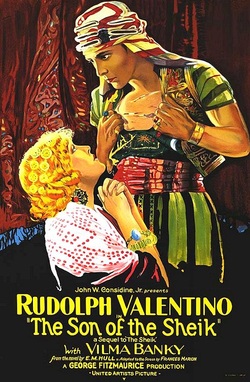 This was Valentino's last movie.
An overlooked aspect of The Wind and the Lion is the amusing way it which director John Milius references a couple of movies that were massive hits in the 1920s and which starred one of the most important and charismatic actors of the silents, the 'hearthrob' Rudolf Vanentino.The Sheikh was issued in 1920 and its sequel, Son of the Sheikh in 1926, shortly after Valentino's death. In the sequel, Valentino played two roles: the father (from the first movie) and his son. Like Sean Connery's Raisuli, Valentino's Sheikh in its various iterations was a dashing, impetuous, warrior, but essentially chivalrous and noble. The first Sheikh movie, interestingly, portrayed the heroine as an enterprising, independent female, searching for adventure. Her counterpart in the 1926 movie is more a stereotyped hapless, helpless endangered woman.
Eden Perdicalis, as played subtly by Candice Bergen in Milius's movie, is very much a 'modern' woman - feisty, intelligent, proactive, forceful, unafraid to speak her mind. Whereas the women in the Sheikh movies succumb sexually to the Valentino character, the relationship between Eden and Rasouli, although not without sexual overtones, is much more a meeting of personalities rather than bodies. Each comes to admire the other's qualities; their interaction occurs on an intellectual level, though not without emotional implications. 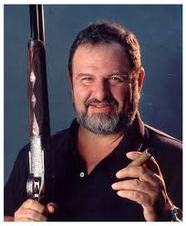
The Wind and the Lion's director John Milius in typically exuberant militaristic pose. This movie is generally acknowledged to be the best of this unorthodox and flamboyant writer-director's films. His right-wing views make him something of an outsider in liberal Hollywood, but he is friends with Steven Spielberg, George Lucas and the Coen brothers. In The Big Lebowski, the John Goodman character Walter is based on Milius. Although it displays his fondness for weaponry (he was once on the board of the NRA) and strong, charismatic leaders, as well as his interest in military power and imperialism, in The Wind and the Lion he managed to control his obsessions or at least place them in the service of a strong plot, interesting characters, fine actors and a series of spectacular set pieces filmed against magnificent natural settings.
Milius is best known for his script for Copplola's Apocalypse Now. He also did the (uncredited) script for Dirty Harry and contributed the 'Indiannapolis' sequence for Spielberg's Jaws as well as co-scripting that director's under-rated comedy 1941. Movies he directed include Big Wednesday, Conan the Barbarian, Red Dawn and Farewell to the King. |
Composer Jerry Goldsmith's score for 'The Wind and the Lion' is generally regarded as the finest work he did for movies.
|
The success and charm of The Wind and the Lion owes much to Connery's dynamic portrayal of Rasouli as a gentleman rogue not to be trilfled with, as well as the appealing on-screen chemistry between Connery and Candice Bergen.
